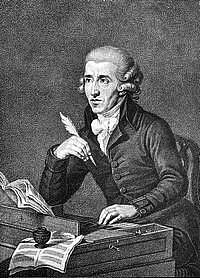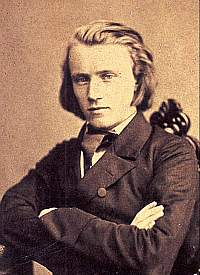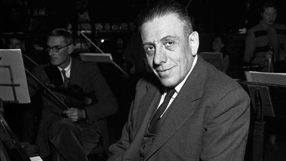The History of
the Sonata cont.
The Classical era

figure in the development of
the sonata in the Classical era
The movements of sonatas were initially laid out in this scheme:
- 1. Allegro - which was understood to mean not only a tempo, but additionally a "working out" or development of the theme.
- 2. The middle movement was usually of a slow tempo, either Andante, Adagio or Largo. Sometimes it was a Minuet or a Theme and Variations format.
- 3. The closing movement was an Allegro or Presto, often labeled as a 'Finale'. The form of this movement was frequently a Rondo or Minuet.
performed by
Zsuzsanna Kökény
and József Madarász
The Romantic era

of the classical sonata
should be stricly adhered to
performed by
Ana Vidovic
In Germany, there emerged two groups with differing views on the evolution of music. Johannes Brahms (1833 – 1897) and the Brahmsians believed that the form and construction of sonatas should be strictly adhered to, and Beethoven's music was the highest ideal of music. While Richard Wagner (1813 – 1883) and Franz Liszt (1811 – 1886) and the Wagnerians claimed to have transcended the excessively strict and rigid rules and forms, which stifled variation and individuality.
Other important composers who wrote sonatas in this era were : Frédéric Chopin, Felix Mendelssohn and Robert Schumann.

was fond of the sonata
The 20th Century
The piano sonata lost its popularity in the late 19th century as composers aspired to break away from traditional forms. The title Sonata no longer implied a work for piano solo; or piano with another instrument, and the work often did not contain multiple movements. Having said this, some composers retained more historical techniques and styles, while others favored newer methods of music making. Composers such as Bartók, Stravinsky, Poulenc and Hindemith wrote sonatas. The frenchman Poulenc was particularly fond of the Sonata and wrote such works for many instruments including oboe, clarinet and flute.
return to page 1 of the history of the sonata
Other Musical forms :
- The Caprice
- The Ecossaise
- The Etude
- The Waltz
- The Polonaise
- The Rondo
- The Caprice
- The Scherzo
- The Sonata
- The Fantasia
- The Passacaglia
- Variation
- The Etude
|
|
Joseph Haydn's Sonata in E Flat |
Felix Mendelssohn'sSonata f-minor, op. 4, |






